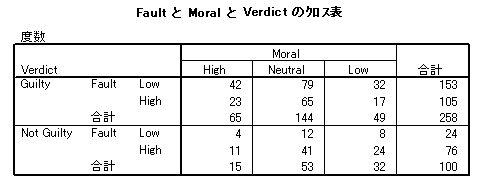
|
モデルの選択
以下のようなクロス集計表 (Howell, 2002, p. 673) を考えてみます。Moral と Fault は犠牲者の特性です。一方,Verdict は被告に対する判決です。ですから,関心は犠牲者の特性と判決との間の関連性にあります。
階層的線型対数モデルとして考えられるのは,飽和モデルを除けば 17個のモデルです。
λF,λM,λV はそれぞれ Fault,Moral,Verdict をそれぞれ表す。λFM は Fault × Moral を,λFV は Fault × Verdict を,λMV は Moral × Verdict をそれぞれ表す。λFMV は Fault × Moral × Verdict を表す。
モデルの当てはめでは,飽和モデルから出発します。モデルに含まれる効果を取り除いた場合,適合度の変化が有意でなければ,その効果をモデルから除きます。適合度が変化が有意であれば,その効果をモデルに残します。
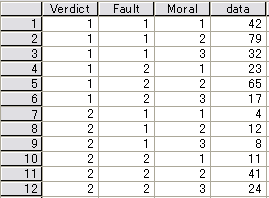

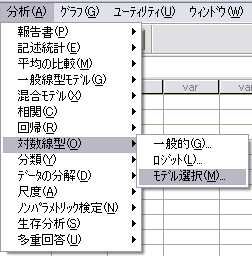
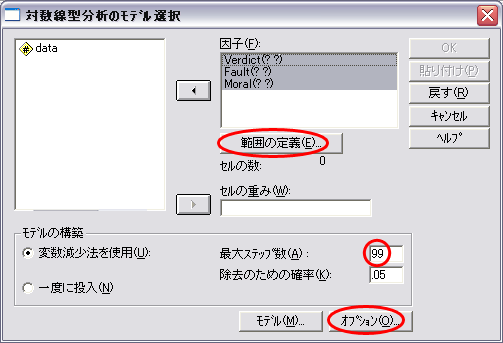
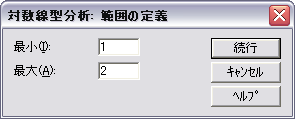
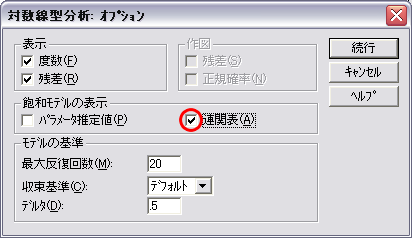
| * * * * * * * * H I E R A R C H I C A L L O G L I N E A R * * * * * * * *
DATA Information
FACTOR Information
- - - - - - - - - - - - - - - - - - - - - - - - - - - - - - - - - - - - - - - - DESIGN 1 has generating class
Note: For saturated models .500 has been added to all observed cells. This value may be changed by using the CRITERIA = DELTA subcommand. The Iterative Proportional Fit algorithm converged at iteration 1. The maximum difference between observed and fitted marginal totals is .000 and the convergence criterion is .250 - - - - - - - - - - - - - - - - - - - - - - - - - - - - - - - - - - - - - - - - Observed, Expected Frequencies and Residuals.
- - - - - - - - - - - - - - - - - - - - - - - - - - - - - - - - - - - - - - - - Goodness-of-fit test statistics
|
Tests that K-way and higher order effects are zero.
- - - - - - - - - - - - - - - - - - - - - - - - - - - - - - - - - - - - - - - - Tests that K-way effects are zero.
|
Tests of PARTIAL associations.
|
| - - - - - - - - - - - - - - - - - - - - - - - - - - - - - - - - - - - - - - - -
Backward Elimination (p = .050) for DESIGN 1 with generating class
Likelihood ratio chi square = .00000 DF = 0 P = . - - - - - - - - - - - - - - - - - - - - - - - - - - - - - - - - - - - - - - - -
Step 1
- - - - - - - - - - - - - - - - - - - - - - - - - - - - - - - - - - - - - - - -
Step 2
- - - - - - - - - - - - - - - - - - - - - - - - - - - - - - - - - - - - - - - -
Step 3
|
| - - - - - - - - - - - - - - - - - - - - - - - - - - - - - - - - - - - - - - - -
The final model has generating class
The Iterative Proportional Fit algorithm converged at iteration 0. The maximum difference between observed and fitted marginal totals is .000 and the convergence criterion is .250 - - - - - - - - - - - - - - - - - - - - - - - - - - - - - - - - - - - - - - - - Observed, Expected Frequencies and Residuals.
- - - - - - - - - - - - - - - - - - - - - - - - - - - - - - - - - - - - - - - - Goodness-of-fit test statistics
- - - - - - - - - - - - - - - - - - - - - - - - - - - - - - - - - - - - - - - - |